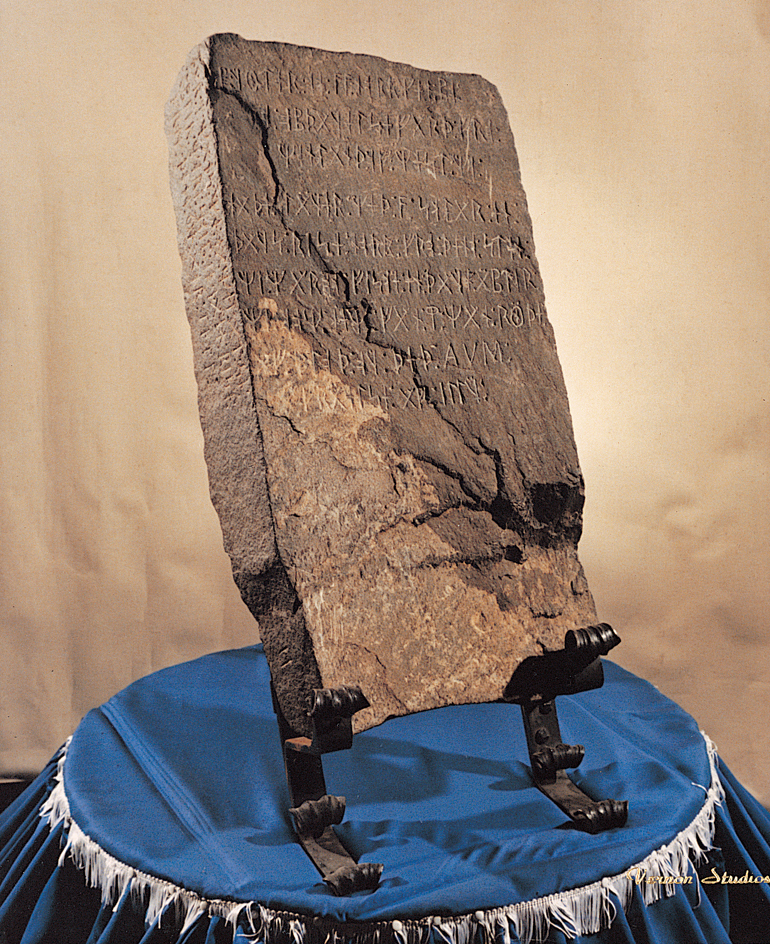Rune << roon >> is any one of the characters of the earliest written alphabet used by the Germanic peoples of Europe. The oldest runic writings date back to the A.D. 200’s. Most runic inscriptions known today were written before the 1000’s. Many runes were carved in wood, but most surviving runes were written in stone.

The word rune comes from a Gothic word meaning secret. Members of early Germanic tribes associated runes with secrecy or mystery because few people understood the inscriptions. Runic characters were probably first used by pagan priests in making charms and magic spells. The characters were also scratched on coins, jewelry, monuments, and slabs of stone or wood. The earliest runes consisted almost entirely of straight lines, arranged singly or in combinations of two or more. Later runes had more complex forms.
Archaeologists have discovered thousands of runic inscriptions. Over 3,000 of these writings were found in Sweden, and many dated from the 800’s to the 1000’s, the period of the Vikings. Other runic writings were discovered in Denmark, England, Germany, and Norway. By the 1000’s, missionaries had converted the Germanic peoples to Christianity. Their conversion led to the introduction of the Roman alphabet, which eventually replaced runic characters.
